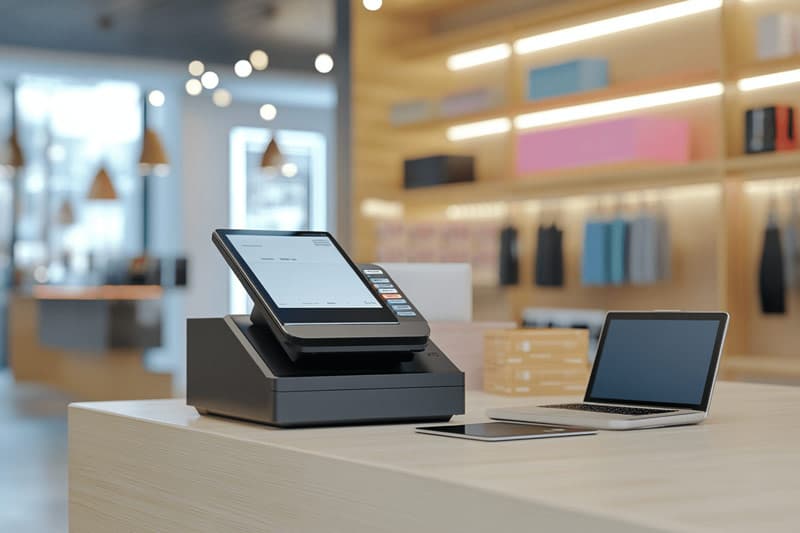If you’re a business owner scratching your head, wondering how much e-commerce makes, you’re not alone. It seems to generate more products and services every year at a faster rate, according to what’s expected. In 2025, global ecommerce revenue will have massive international thresholds set at over $7 trillion, with North America and Asia-Pacific as the largest consumers and merchants. But for high-risk industries—in which statistics rely upon access to banking, merchant processing services, compliance and regulatory best practices—revenue benchmarks differ. These industries include CBD, nutraceuticals, firearms, adult-themed content, debt relief, and travel, all banking on banking regulation as well as merchant processing services in which they may pay much higher fees to obtain payment resources. Revenue benchmarks show how much ecommerce makes every year, but for select high-risk verticals, the expectations are different.
Global Ecommerce in 2025: Overview
According to research provided by Statista and Digital Commerce 360, global e-commerce revenue is expected to exceed $7 trillion in 2025, accounting for nearly 25% of all retail sales across the globe[1]. As industries establish online omnichannel presences and consumer demand increases for direct-to-consumer shopping options, further compounded by mobile access and a focus on repeat-billing opportunities, the inquiry surrounding how much e-commerce makes sense becomes exceptionally ideal. However, without analyzing the data from established industries—those not susceptible to chargebacks easily or having to worry about excessive compliance initiatives—one may only see the favorable light of how successful e-commerce is. For high-risk industries, however, the reality is much different, as successful merchants are only able to achieve 25% of revenue expectations based on their ability to follow regulations. For example, high-risk merchants are unable to gain credit cards through traditional avenues—therefore relying upon specialized processors to assist, which limits their ability to grow.
Merchant Processing Services as a Revenue Benchmark
Revenue benchmarks are contingent upon merchant processing services, as no business can survive without dependable credit card acceptance and reliable recurring billing options. For e-commerce to become an industry of revenue return based upon expected earnings, its own earning expectations are derived from successful chargeback prevention measures at effective processing fees. For high-risk industries—where chargebacks abound—merchant processing services need to be accredited to process such opportunities, but may charge much higher rates to do so. If a sector believes it’s going to net percentage A but has to give away percentage B for credit card processing over time, its revenue benchmarks change tremendously. Million-dollar ideas only happen with million-dollar potential credits.
CBD Ecommerce Revenue Benchmarks
For example, the CBD and hemp industry continues to be one of the largest growth sectors despite changing regulations every year. By 2025, the projected US ecommerce revenue for CBD sits just above $6 billion, with a national historical expected wellness-driven isolates, oils, gummies and topicals likely driving sales. Yet the benchmarks for CBD industries are all over the place due to state-by-state regulations determining products and access. Whether a business abides by state laws or general American laws will determine profitability expectations. For small to mid-sized CBD ecommerce storefronts, projections find an average between $500K and $2 million per year, with major businesses surpassing $10 million annually. While revenues seem favorable, they must be adjusted down due to expensive merchant processing service fees for high-risk merchants, which can take from +4-10% of every transaction[2].
Nutraceutical Ecommerce Revenue Benchmarks
Similarly, for nutraceuticals, natural supplements humans consume reign supreme as one of the most profitable high-risk ecommerce categories, with annual data globally of more than $100 billion. The contribution to e-commerce expected revenue is well over half, according to supplements visualizing gross sales through subscription-based direct-to-consumer opportunities. Thus, smaller nutraceutical brands make $1-$5 million per year; top supplement companies exceed $50 million annually. Yet with international opportunity comes additional potential chargebacks due to fraud. Great estimating profitable merchants should review revenue benchmarks based on their ability to successfully remove chargebacks through reliable credit card acceptance and enterprise-integrated billing[3].
Firearms Ecommerce Revenue Benchmarks
For firearms accessories ecommerce, there’s still plenty of revenue-generating sustainable power despite extensive regulation governing both purchases and registrations. E-commerce in the United States suggests firearm accessory purchases alone (optics, holsters and ammunition) exceed $5 billion every year; licensed firearms require additional compliance steps through registration, but still extensive sales figures. Smaller firearms-associated websites gross $1-$3 million annually, while larger brands surpass $20 million a year. Of course, similar to the CBD industries, where more compliance generates requirements by merchant service processors needing more reserves up front, which ultimately affect revenue benchmarks over time[4].
Debt Relief Ecommerce Revenue Benchmarks
Wherever high-risk is involved relative to chargebacks, industry growth projections become more limited over time, as merchants need reliable credit card acceptance for accuracy. Excessive compliance exists with debt relief businesses from credit repair companies, promoting themselves as a high-risk category. Revenue admissions fluctuate throughout this sector as smaller debt relief companies gross $500K annually, while larger credit card relief or debit repair companies gross between $5-$10 million annually. With businesses focusing on service subscriptions or repeated billable services, increasing reliability expectations from merchant processing services, chargeback prevention factors into making sure revenue stays consistent.
Travel Ecommerce Revenue Benchmarks
International travel is set to generate over $1.4 trillion for the e-commerce marketplace in 2025; travel agents and ticket stockbrokers will have the largest market share, garnering 75% global approval. High-risk ticketing agencies across multiple travel sites and agencies focused on third-party sales have smaller expected chargeback ratios at 10% due to cancellations or fraud associated with negative consumer response, while the average small dollar generates anywhere from $1-$3 million a year, while large ticket platforms exceed $50 million a year. Yet reservations can only generate estimated value dollars; aggregate revenues include a percentage loss due to chargeback solutions, other ticketing agencies’ expected resolution timeframes are similar to the purchase price between ticket pricing and excessive fees associated with ticket transactions, and end in dollars through a highly expected reputable merchant processor.
Six Factors Which Determine How Much Ecommerce Makes
Regulatory Environment
Compliance requirements vary widely between industries and regions. Stricter regulations often increase operational costs, reducing net revenue benchmarks.
Chargeback Ratios
High chargeback rates can disqualify merchants from working with mainstream processors, pushing them to more expensive high-risk providers and reducing profitability.
Processor Fees
Merchant processing services for high-risk accounts often charge rates between 4% and 8%, significantly higher than low-risk industries, lowering net margins.
Consumer Trust
Stigmatized industries like CBD or firearms must invest heavily in brand trust and transparency. Lower trust can reduce conversion rates and average order values.
Payment Accessibility
Limited access to mainstream payment providers forces some merchants to rely on offshore processors, increasing costs and reducing revenue predictability.
Market Saturation
The level of competition within each industry determines average revenue benchmarks. Overcrowded niches often see lower revenue per merchant.
The Future of Revenue Benchmarks in High-Risk Ecommerce
Going forward, though, without knowing how much this e-commerce makes, it’s almost impossible, since looking at broader attractions going into high-risk industries, aggregate revenue categories remain effective in determining minimal baselines. Whether regulations become clearer in CBD/travel adjustments or processors adjust fees over time, it is unlikely to see much decreased min/max income thresholds; assured will continue generating categories for optimal/high risk exposure championing efforts across aspects of the board[5].
FAQ
Q: How much does e-commerce make in 2025 overall?
A: E-commerce global revenues exceeded $7 trillion in 2025, accounting for nearly 25% all retail sales across the globe.
Q: Why are high-risk industries different than traditional e-commerce in revenue reporting?
A: High-risk merchants operate with higher processor fees, legal compliance initiatives and partnerships, which cost much more percentage points compared to low-risk merchants, reducing net profitability metrics.
Q: Which high-risk e-commerce industry generates the most revenue?
A: Nutraceuticals, firearms accessories and travel are among the highest generating revenue sectors in 2025.
Q: How do merchant processing services impact reported revenue?
A: Processor fees/reserve/revenue share directly impact net conversions per dollar made; high-risk merchants pay much more than low-risk companies.
Q: What trends come up around how much e-commerce makes?
A: Expect broader adoption of AI fraud tools, blockchain payments, and real-time settlement systems to influence benchmarks and profitability.
Sources
- Statista. “Global Ecommerce Sales Forecast 2025.” Accessed August 2025.
- Grand View Research. “CBD Market Size and Growth Trends.” Accessed August 2025.
- Mordor Intelligence. “Nutraceuticals Market Overview.” Accessed August 2025.
- IBISWorld. “Firearms and Ammunition Online Sales.” Accessed August 2025.
- Visa. “Merchant Resources for Payment Acceptance.” Accessed August 2025.











